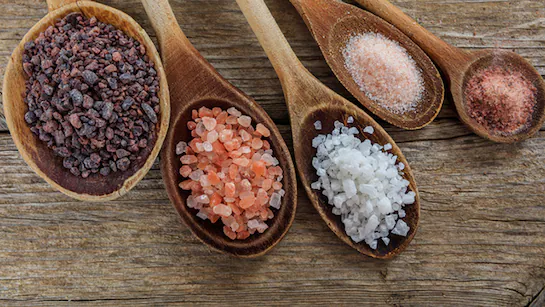Celtic Salt Benefits, Uses, and Health Facts You Need to Know

Celtic salt has emerged as a favorite among natural health enthusiasts and gourmet chefs alike. Known for its grayish hue, mineral-rich composition, and natural harvesting process, Celtic salt offers far more than just flavor enhancement. Whether you’re interested in holistic wellness, want to upgrade your pantry with high-quality salts, or are curious about the hype behind this ancient sea salt, this in-depth guide has everything you need.
In this 2,500+ word article, we’ll explore what Celtic salt is, its origins, health benefits, culinary uses, differences from table salt and Himalayan salt, myths, how to use it in your daily life, and where to buy the best quality. By the end of this article, you’ll know exactly why Celtic salt deserves a spot in your kitchen and possibly even your skincare routine.
What is Celtic Salt?
Celtic salt, often referred to as Sel Gris (gray salt in French), is a type of sea salt harvested using ancient methods from the coastal areas of Brittany, France, particularly from the Guérande salt flats. Unlike processed white salt, Celtic salt retains its natural moisture, trace minerals, and unique color, thanks to traditional harvesting techniques.
This salt is hand-raked after sun-drying in clay ponds, a process that has been used for over 2,000 years. The result is a slightly damp, mineral-dense, unrefined salt with a soft gray color and briny taste.
Nutritional Profile of Celtic Salt
While table salt is typically stripped of most minerals except sodium and sometimes fortified with iodine, Celtic salt remains naturally rich in essential trace elements. Here’s a breakdown of what you can expect in Celtic salt:
- Sodium chloride (approximately 84%)
- Magnesium
- Potassium
- Calcium
- Iron
- Zinc
- Manganese
- Selenium
- Iodine (naturally occurring in small amounts)
These minerals are present in minute amounts but are vital for various body functions. What makes Celtic salt special is its electrolyte-balancing capabilities due to the presence of minerals like magnesium and potassium.
Health Benefits of Celtic Salt
Here’s a deep dive into some of the most widely reported and studied health benefits of Celtic salt:
Balances Electrolytes and Hydration
Thanks to its rich mineral content, Celtic salt can help regulate fluid balance in the body. It supports cellular hydration, especially when added to water or post-workout drinks.
Supports Adrenal and Thyroid Health
Trace elements such as iodine, selenium, and magnesium play crucial roles in maintaining healthy adrenal glands and thyroid function. Celtic salt contains these in natural forms, making it a great choice for hormonal balance.
Improves Digestion
Celtic salt may stimulate the production of digestive enzymes and hydrochloric acid (HCl) in the stomach, aiding in better digestion and nutrient absorption. It also promotes the production of bile.
Promotes Alkalinity
Despite being salty, Celtic salt helps maintain the alkaline balance in the body. It can neutralize excess acidity and support internal pH balance.
Boosts Energy Levels
Due to its ability to regulate hydration and electrolytes, using Celtic salt can reduce fatigue, especially in people who follow active lifestyles or sweat frequently.
Supports Detoxification
The minerals in Celtic salt can assist in drawing out toxins and heavy metals, particularly when used in salt baths or added to detox beverages.
Improves Sleep Quality
Magnesium and other calming minerals in Celtic salt may help with relaxation and deep sleep, especially if consumed in a warm beverage before bed.
Celtic Salt vs. Table Salt vs. Himalayan Salt
Celtic Salt
- Color: Light gray
- Texture: Moist, coarse
- Minerals: Over 80 trace minerals
- Source: Coastal France
- Processing: Unrefined, hand-harvested
- Taste: Milder, oceanic
Table Salt
- Color: Bright white
- Texture: Fine and dry
- Minerals: Mostly sodium chloride, sometimes iodine
- Source: Mined or evaporated
- Processing: Highly refined, bleached
- Taste: Sharp, salty
Himalayan Salt
- Color: Pink to deep red
- Texture: Dry, fine or coarse
- Minerals: 80+ trace minerals
- Source: Punjab region, Pakistan
- Processing: Hand-mined, minimally processed
- Taste: Slightly sweet, earthy
Celtic salt is unique in its moisture retention and clay-harvesting method, which preserve not only the minerals but also the energy of the sea from which it’s harvested.
Culinary Uses of Celtic Salt
Celtic salt is a versatile ingredient in the kitchen and can be used in a variety of dishes and beverages:
Seasoning for Savory Dishes
Use it to season meat, vegetables, soups, and stews. Its mineral-rich taste enhances natural flavors without overpowering them.
Salt Crust Baking
Celtic salt is perfect for salt crust baking for dishes like whole fish or chicken. It locks in moisture and infuses the food with flavor.
Fermentation
Celtic salt supports lacto-fermentation due to its microbial stability and rich mineral content, making it ideal for sauerkraut, kimchi, and pickles.
Sprinkling on Baked Goods
A touch of Celtic salt on cookies or caramel desserts can add a complex salty contrast that elevates sweetness.
Rehydration Drinks
Add a pinch to water with lemon juice to make a homemade electrolyte drink.
Skincare and Beauty Benefits
The benefits of Celtic salt go beyond internal health. Here are a few popular ways people use it in their beauty routines:
Exfoliation
Mix Celtic salt with a carrier oil (like coconut or jojoba oil) to make an exfoliating scrub. It removes dead skin and improves circulation.
Mineral Baths
Soaking in a Celtic salt bath can help relieve sore muscles, detox the skin, and reduce inflammation. Add 1–2 cups to warm water for a rejuvenating soak.
Facial Steam
Add a tablespoon of Celtic salt to steaming water for a facial detox. This helps open up pores and reduce acne-causing bacteria.
Salt Rinse for Hair
Use a diluted saltwater rinse to cleanse and add volume to oily hair and scalp.




